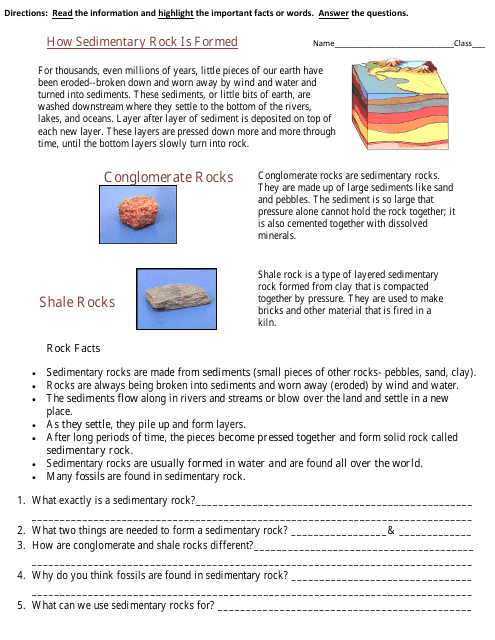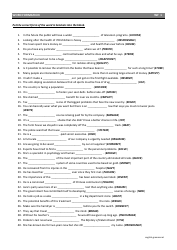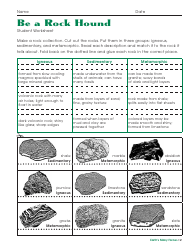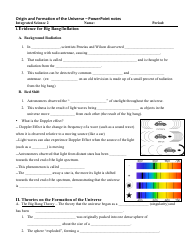Sedimentary Rock Formation Geology Worksheet
The Sedimentary Rock Formation Geology Worksheet is typically used as a learning tool in schools or educational settings. It helps students understand the formation process of sedimentary rocks and allows them to practice identifying key features and characteristics of these rocks.
FAQ
Q: What is sedimentary rock?
A: Sedimentary rock is a type of rock that forms from sediment, such as sand, mud, and tiny particles, that is compacted and cemented together.
Q: How does sedimentary rock form?
A: Sedimentary rock forms when sediment is deposited and gradually buried by more overlying layers of sediment. Over time, the pressure from the weight of the sediment compacts it, and minerals in the water can cement the sediment particles together.
Q: What are examples of sedimentary rocks?
A: Examples of sedimentary rocks include sandstone, limestone, shale, and conglomerate.
Q: What are the three types of sedimentary rocks?
A: The three types of sedimentary rocks are clastic, chemical, and organic.
Q: What is clastic sedimentary rock?
A: Clastic sedimentary rock is made up of fragments of pre-existing rocks that have been weathered, transported, and deposited.
Q: What is chemical sedimentary rock?
A: Chemical sedimentary rock forms when minerals dissolved in water precipitate and solidify.
Q: What is organic sedimentary rock?
A: Organic sedimentary rock forms from the remains of once-living organisms, such as shells or plant matter.
Q: What can sedimentary rocks tell us about Earth's history?
A: Sedimentary rocks can provide information about past environments, climate, and changes in Earth's surface over time.
Q: Are sedimentary rocks important?
A: Yes, sedimentary rocks are important because they contain valuable resources like coal, oil, and natural gas, and they often preserve fossils which give insights into past life forms and ecosystems.











